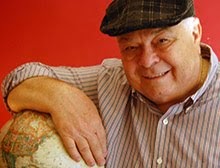 |
| Venice captures the imagination whenever you go (Taylor) |
Shortly after World War II, when
transatlantic jet service to Europe was making globe-hopping easier than ever
before, Americans flocked to their travel agents to book “grand tours of Europe .” In those days tours were labeled, “If it’s
Tuesday, it must be Belgium
 |
| Monet's Japanese Bridge (wikipedia) |
Now that travel has become relatively
less expensive and access has become far greater to more people, the concept of
seeing the entire world in one deluxe trip is no longer in vogue in the same
ways it used to be.
Savvy travelers have become more discriminating, preferring to settle
down in one hotel for several nights and doing day trips as opposed to having
luggage outside the door at seven so they can get a 30-second photo-op at the Eiffel Tower
 |
| Waterfall on the Lake of Brienz in Switzerland (Taylor) |
In that sense, many tourists have
developed a “been there, done that” philosophy which is almost as silly as those
old grand tours we used to take.
 |
| Swan Hotel, Lavenham, England (Taylor) |
Years ago, I was invited to go to London and East
Anglia East Anglia
meant nothing to me, but London
I went to my supervisor and explained
that I would like to take the trip and do some stories about what it is like to
fly on the Concorde. Nobody in my home town had ever done that story so it
seemed like a natural.
 |
| The Victor Emmanuelle Monument rises above Rome (Taylor) |
The next day she came back to me and
said, “We did a story about Harrod’s in London
last year so we’ve done England
That’s when it hit me. One story about
Harrod’s and the station philosophy was that we had done England
When I finally ventured into the travel
writing business on my own, I met a woman in her early ’70s who did not start
writing until she was 60. Doris Whitehead always said, “I want to see every
place once before I see any place twice.”
 |
| The Lion King (John Lasater) |
For a long time I believed in that concept, until I had a chance to return to a place I had been once before. Many people believe they must always go someplace new, forgetting about everything they may have missed during the first and only previous visit to a destination.
Travel is the most interactive
experience you can have in life, except perhaps for making love. But no matter
how often you visit a place, each time it will be different. The weather will
be different. Chances are, your traveling partners will not be the same. The
destination will likely have new things to see and do.
 |
| Travel is exotic and frequently colorful (wikipedia) |
All of which is a long way of saying
that frequently the second or even third time you visit a place may be far more
rewarding than the first.
Experts say that one reason
professional golfers have such a difficult time their first year on the tour is
because they not only have to play four great rounds of golf, but they have to
learn how to get to the course, where the restaurants are, the check-in
procedures and any number of other things that get in the way of just plain old
playing golf.
 |
| Snow mountains in Antartica (Martin Gunter) |
Travel isn’t much different. Most
people go to London Paris the first time and
doesn’t see the Eiffel
Tower
 |
| Dubrovnik Harbor at dusk in Croatia (captivatingcroatia.com) |
Ah, but the second time you can stop
and rest at a quaint sidewalk café and while away an hour or two just people
watching. That’s as much a part of the experience as the major attractions…
only the second time around you have indeed “been there, done that” so you can
savor the joy of discovering something completely new.
Juliette Levy got it right. Learn the
rhythm of a country and you will come to love it even more.
 |
| Balinesian dance (Taylor) |
 |
| The Wilhelm Tham plies the Gota Canal in Sweden (wikipedia) |


































